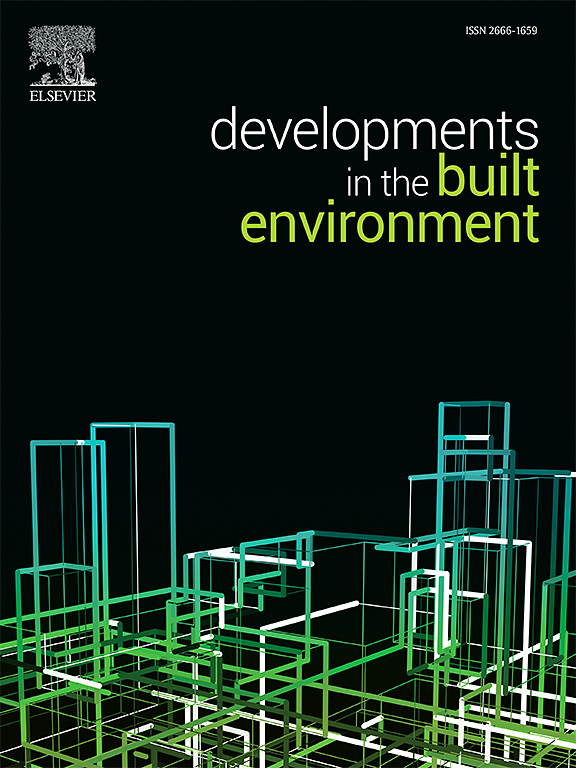再生电子垃圾纤维与聚乙烯醇对掺有再生混凝土骨料的绿色混凝土性能的协同效应
IF 8.2
2区 工程技术
Q1 CONSTRUCTION & BUILDING TECHNOLOGY
引用次数: 0
摘要
对可持续建筑日益增长的需求凸显了对利用废料的创新混凝土解决方案的需求。虽然已经分别研究了再生混凝土骨料(RCA)、聚乙烯醇(PVA)和再生电子废物纤维(E-waste fibers),但它们的综合效应仍未得到充分探索。本研究通过研究粗RCA (CRCA)和电子垃圾纤维对绿色混凝土的新鲜度、机械性能、耐久性、热学性能和经济性能的协同效应来解决这一空白。粉煤灰用量占水泥用量的20%,PVA用量占水泥重量的1%。结果表明,随着CRCA含量的增加,由于孔隙率的增加,可加工性和强度降低。然而,加入4.5%的电子垃圾纤维通过桥接微裂纹显着改善了机械性能。较高的纤维含量对耐久性和和易性有不利影响。CRCA和纤维越多,导热系数越低,绝缘性能越好。经济分析证实,4.5%的电子垃圾纤维具有成本效益。这项研究支持在混凝土中可持续利用电子废物和建筑废物。本文章由计算机程序翻译,如有差异,请以英文原文为准。
Synergistic effect of recycled E-waste fiber and polyvinyl alcohol on the properties of green concrete incorporating recycled concrete aggregate
The growing demand for sustainable construction highlights the need for innovative concrete solutions using waste materials. Although recycled concrete aggregate (RCA), polyvinyl alcohol (PVA), and recycled electronic waste fibers (E-waste fibers) have been studied individually, their combined effects remain underexplored. This study addresses this gap by investigating the synergistic effects of coarse RCA (CRCA) and E-waste fibers on the fresh, mechanical, durability, thermal, and economic properties of green concrete. Fly ash replaced 20 % of cement, and PVA was added at 1 % by cement weight. Results showed that increasing CRCA content reduced workability and strength due to porosity. However, incorporating 4.5 % E-waste fibers significantly improved mechanical performance by bridging microcracks. Higher fiber contents negatively affected durability and workability. Thermal conductivity decreased with more CRCA and fibers, enhancing insulation. Economic analysis confirmed that 4.5 % E-waste fiber offers cost-effective performance. This study supports the sustainable use of electronic and construction waste in concrete.
求助全文
通过发布文献求助,成功后即可免费获取论文全文。
去求助
来源期刊

Developments in the Built Environment
Multiple-
CiteScore
7.40
自引率
1.20%
发文量
31
审稿时长
22 days
期刊介绍:
Developments in the Built Environment (DIBE) is a recently established peer-reviewed gold open access journal, ensuring that all accepted articles are permanently and freely accessible. Focused on civil engineering and the built environment, DIBE publishes original papers and short communications. Encompassing topics such as construction materials and building sustainability, the journal adopts a holistic approach with the aim of benefiting the community.
 求助内容:
求助内容: 应助结果提醒方式:
应助结果提醒方式:


